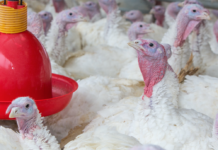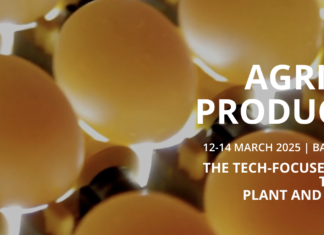
Industrial compound feed production in the EU remained stable in 2021. Looking forward, the spread of animal diseases and the continuing global grain market rally fuelled by the Russian invasion of Ukraine is expected to reduce compound feed demand in 2022 by 4–5 Mio tons.
EU compound feed production (EU27) for farmed animals in 2021 is estimated at 150,2 Mio t., an increase of 0.03 % compared to 2020, according to data provided by FEFAC members. Except for the pig feed sector, all other sectors managed to stabilize/or slightly increase their production despite the continuing Covid-19 pandemic, global grain market rally, supply chain disruptions and spread of animal diseases in 2021.
Following the 2021 EU critical pigmeat situation, facing challenges of reduced meat demand in key export markets, high costs for feed grains, the impact of African Swine Fever and significantly increased 2020 production, the pig feed production decreased by -1.5% in 2021.
The EU poultry feed sector managed to increase its production by 1.1% compared to the previous year, recovering partially from losses linked to Covid lockdown measures (HORECA) in 2020. Ireland, Spain, Italy, Portugal, Austria, Finland and Romania enjoyed growth of more than 5% while a decrease was reported in Germany, France, Belgium, Sweden, Poland and Lithuania mainly due to high costs of raw materials (farmers not starting a new cycle/rotation), Avian Influenza and flat or reduced retail prices for eggs impacting the poultry sector.
Cattle feed production slightly increased by 0.2% compared to the previous year due to a higher increase in production in Ireland, Bulgaria and Austria (+6%) following a severe drought impacting grass growth.
Market outlook for 2022
 Looking at the market outlook for 2022, the EU pig and poultry sector are expected to reduce their activities due to the high cost of feed materials, lower market demand and expanding Avian Influenza outbreaks in several countries. Hence, FEFAC members’ estimates decrease by -4.2% for pig feed and -3% for poultry feed. The cattle feed production is expected to decrease by -1.6%. Overall, the industrial compound feed production is estimated to decrease by -2.9% (i.e. 4.3 Mio tonnes) compared to 2021. However, market uncertainties remain very high due to ongoing Russian aggression in Ukraine. The immediate loss of feed maize, sunflower meal and other feed materials from Ukraine and Russia could only be partially compensated by increased feed imports, mainly from the US and Canada. Key logistical challenges are persisting on how to move existing grain stocks out of Ukraine and will continue to impact market availability in the new Marketing Year.
Looking at the market outlook for 2022, the EU pig and poultry sector are expected to reduce their activities due to the high cost of feed materials, lower market demand and expanding Avian Influenza outbreaks in several countries. Hence, FEFAC members’ estimates decrease by -4.2% for pig feed and -3% for poultry feed. The cattle feed production is expected to decrease by -1.6%. Overall, the industrial compound feed production is estimated to decrease by -2.9% (i.e. 4.3 Mio tonnes) compared to 2021. However, market uncertainties remain very high due to ongoing Russian aggression in Ukraine. The immediate loss of feed maize, sunflower meal and other feed materials from Ukraine and Russia could only be partially compensated by increased feed imports, mainly from the US and Canada. Key logistical challenges are persisting on how to move existing grain stocks out of Ukraine and will continue to impact market availability in the new Marketing Year.
Key market drivers which could weigh in against demand for compound feed in 2022:
– the continued spread of animal diseases (AI & ASF);
– economic uncertainties mainly linked to war in the Ukraine;
– farm-gate prices for animal products below costs price;
– other EU policy decisions (pressure on lowering GHG and other emissions, welfare policy & deforestation-free supply chains);
– disruptions in supply chain due to Covid (restrictions in China impacting export of additives and other feed ingredients).
Source: FEFAC
















